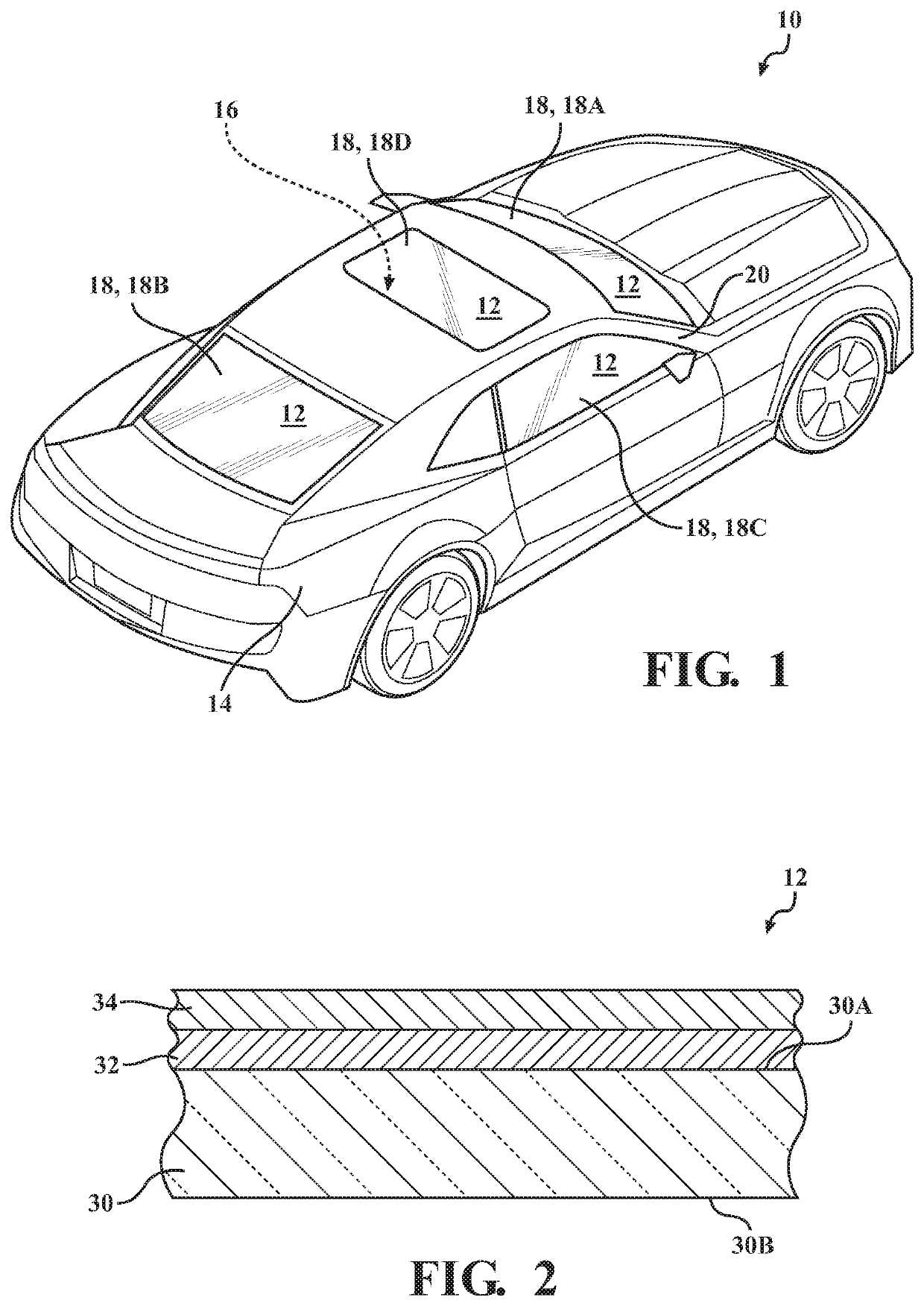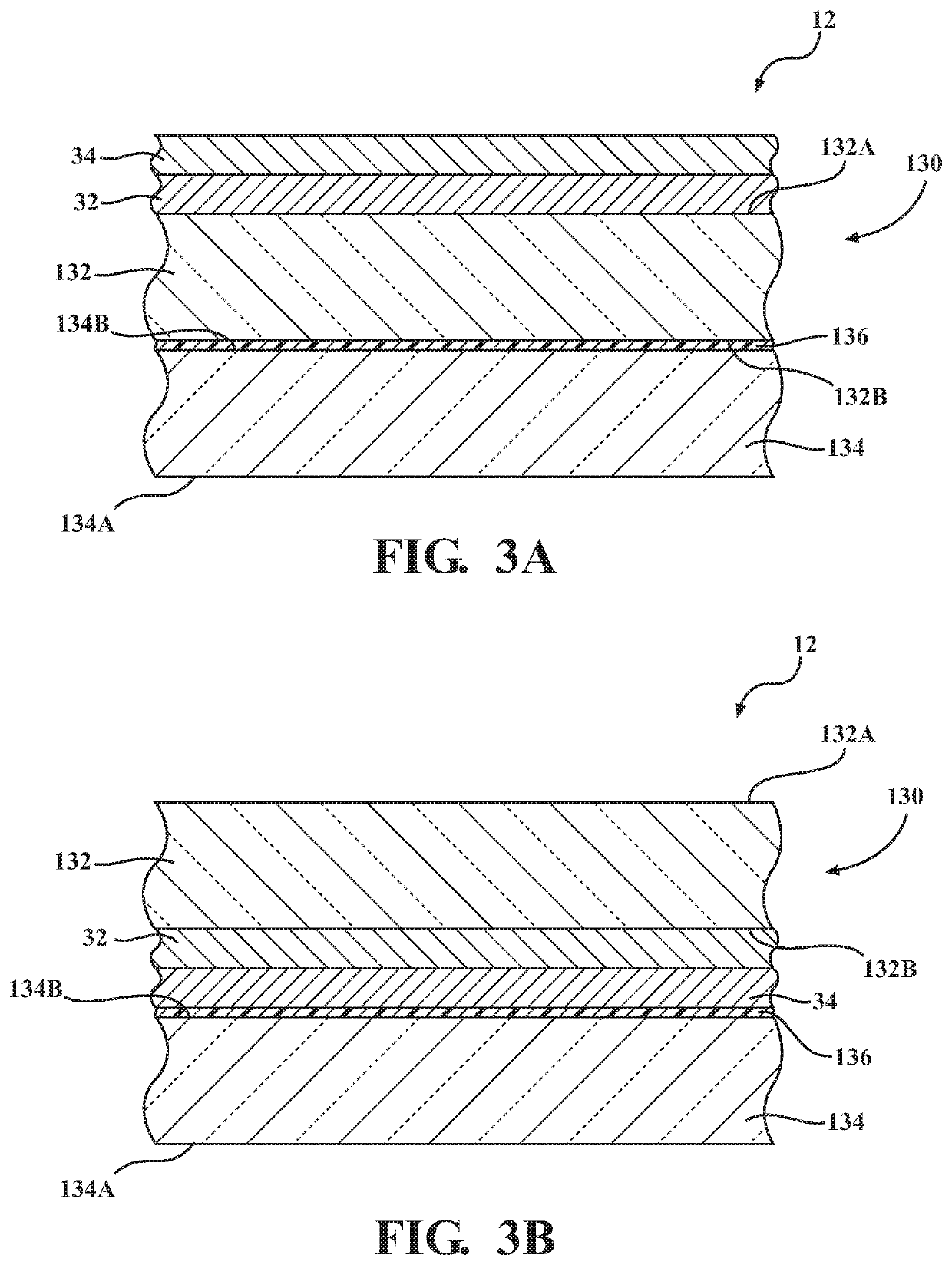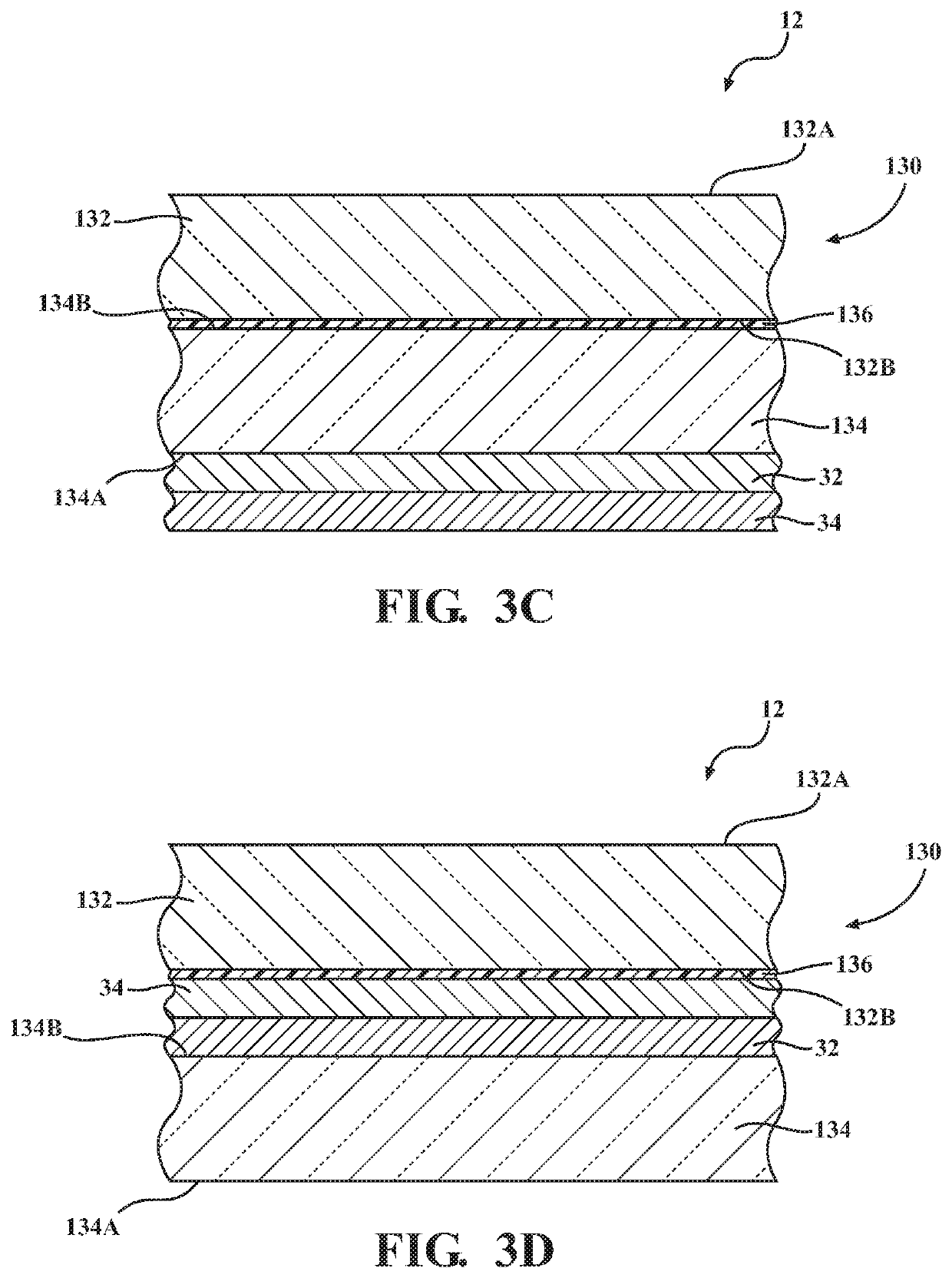Substantially transparent substrates including high and low emissivity coating layers
a substrate and emissivity coating technology, applied in the direction of coatings, transportation and packaging, windows, etc., can solve the problems of low emissivity coating layers, high thermal emissivity of the environment, and relatively low hardness of coating layers, so as to achieve high emissivity and minimize heat buildup on the substrate
- Summary
- Abstract
- Description
- Claims
- Application Information
AI Technical Summary
Benefits of technology
Problems solved by technology
Method used
Image
Examples
examples
[0079]In the Examples provided herein, samples comparing the performance of glass substrates with and without the introduction of the low and high emissivity coating layers, were evaluated for light emissivity, durability, and cooling ability in certain test conditions. The results confirm the improved properties for treated substrates including a combination of the low and high emissivity coating layers in accordance with the subject invention as compared with untreated substrates or substrates including only the low emissivity coating layer, as described below.
The Low Emissivity and High Emissivity Coating Composition
[0080]The low emissivity coating composition utilized in the Examples was IRIS Neutral coating composition, commercially available from AGC Europe, as described generally above.
[0081]The high emissivity coating composition used in the Examples was according to the formula SixOyCz, wherein x is 30 weight percent, y is 60 weight percent, and z is 10 weight percent.
Metho...
PUM
| Property | Measurement | Unit |
|---|---|---|
| wavelengths | aaaaa | aaaaa |
| wavelengths | aaaaa | aaaaa |
| emissivity | aaaaa | aaaaa |
Abstract
Description
Claims
Application Information
 Login to View More
Login to View More - R&D
- Intellectual Property
- Life Sciences
- Materials
- Tech Scout
- Unparalleled Data Quality
- Higher Quality Content
- 60% Fewer Hallucinations
Browse by: Latest US Patents, China's latest patents, Technical Efficacy Thesaurus, Application Domain, Technology Topic, Popular Technical Reports.
© 2025 PatSnap. All rights reserved.Legal|Privacy policy|Modern Slavery Act Transparency Statement|Sitemap|About US| Contact US: help@patsnap.com



